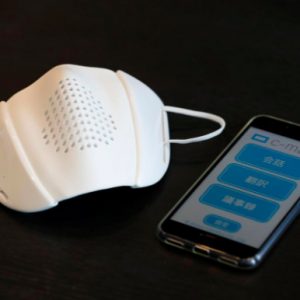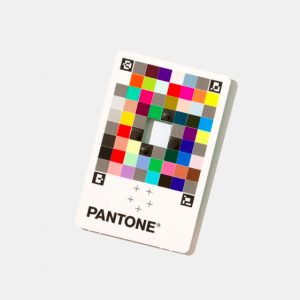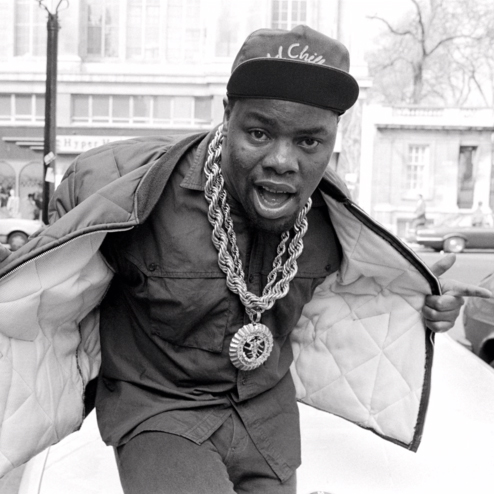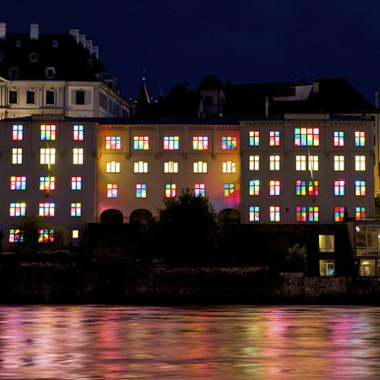Link About It: This Week’s Picks
From a color-matching app by Pantone to the history of the fire pole and a profile of the keepers of NYC’s community fridges, our round-up from the web

Don’t Back Down! Art Initiative
 With 100% of their proceeds directed to Inner-City Arts, The Okra Project and Equal Justice Initiative, the new artistic initiative Don’t Back Down! sells limited edition prints by emerging and beloved artists including Jamel Shabazz and Brad Elterman. Customers will find well-known images (like some of David Corrio’s work) and those they’ve never seen before; everything is imbued with beauty, charm and value. Each artwork will be high-res on high-quality paper, printed at DTLA’s Contact Photo Lab, a small, Black-owned printing business and community darkroom. See more at the Don’t Back Down! site.
With 100% of their proceeds directed to Inner-City Arts, The Okra Project and Equal Justice Initiative, the new artistic initiative Don’t Back Down! sells limited edition prints by emerging and beloved artists including Jamel Shabazz and Brad Elterman. Customers will find well-known images (like some of David Corrio’s work) and those they’ve never seen before; everything is imbued with beauty, charm and value. Each artwork will be high-res on high-quality paper, printed at DTLA’s Contact Photo Lab, a small, Black-owned printing business and community darkroom. See more at the Don’t Back Down! site.
Zephyr’s Double-Decker Airplane Seats Let Passengers Lie Flat
 Named the Zephyr Seat, US-based start-up Zephyr Aerospace’s new patent-pending design lets customers in economy class lie flat, courtesy of a double-decker bunk that saves space and creates more formal dividers between travelers. Telescopic stairs provide access to the top level, which sits in line with the seat below. The layout results in both passengers being able to find multiple sitting and sleeping options—all without having to alter the space of those seated nearby. The designs are still facing rigorous safety testing and likely won’t be available for another three years. Read more at Insider.
Named the Zephyr Seat, US-based start-up Zephyr Aerospace’s new patent-pending design lets customers in economy class lie flat, courtesy of a double-decker bunk that saves space and creates more formal dividers between travelers. Telescopic stairs provide access to the top level, which sits in line with the seat below. The layout results in both passengers being able to find multiple sitting and sleeping options—all without having to alter the space of those seated nearby. The designs are still facing rigorous safety testing and likely won’t be available for another three years. Read more at Insider.
This “Smart Mask” Can Translate Japanese Into Eight Languages
 Japanese start-up Donut Robotics has elevated the face mask category by creating a “smart” version capable of translating and transmitting messages from Japanese into eight other languages. The “c-mask” (made from plastic and worn over a regular cloth mask) connects to an app on your phone or tablet “that can transcribe speech into text messages, make calls, or amplify the mask wearer’s voice.” While the result of years of development, the mask itself was invented in response to the COVID-19 pandemic. As Donut Robotics chief executive Taisuke Ono says, they have used their robot technology “to create a product that responds to how the coronavirus has reshaped society.” At around $40 each, these masks will be relatively accessible and should begin shipping in Japan this September, with other countries to follow. Read more at Reuters.
Japanese start-up Donut Robotics has elevated the face mask category by creating a “smart” version capable of translating and transmitting messages from Japanese into eight other languages. The “c-mask” (made from plastic and worn over a regular cloth mask) connects to an app on your phone or tablet “that can transcribe speech into text messages, make calls, or amplify the mask wearer’s voice.” While the result of years of development, the mask itself was invented in response to the COVID-19 pandemic. As Donut Robotics chief executive Taisuke Ono says, they have used their robot technology “to create a product that responds to how the coronavirus has reshaped society.” At around $40 each, these masks will be relatively accessible and should begin shipping in Japan this September, with other countries to follow. Read more at Reuters.
NYC’s Community Fridges

An untitled collective of individuals from across NYC are maintaining a network of “community fridges”—essentially shared food banks that provide groceries to those facing food insecurity while also reducing waste. Neighbors drop off extra groceries, pizza shops contribute unused dough, florists offer leftover buds, and some local chefs (like Harlem’s Melba Wilson, for example) are even making dishes specifically for these fridges. Founder Thadeaus Umpster (though hesitant to assume a formal leadership role) is a member of the NYC-based collective A New World in Our Hearts, a mutual-aid support system, and says, “This is not charity; this is empowerment. There isn’t a group you have to thank. It’s something the community can own.” Read more at The Cut.
The History of the Firehouse Pole
 During the 19th century, firefighters in the United States had two ways to make their way from their beds to their horse and buggy: “spiral staircase—installed to keep wayward horses from wandering upstairs—or through a tube chute.” That was until the ingenious David Kenyon installed a pole at Chicago’s all-Black firefighter Company 21 firehouse. Kenyon had seen a colleague use a “wooden pole normally used to bale hay for horses” to descend to the ground floor, and realized that it was not only fast but a space-saver. This clever thought changed firehouses all over the world, and while many have now removed their poles for various safety reasons, countless firefighters value the pole’s historical significance. As Sean Colby (of Engine 10 in Boston) says, “It’s a major part of firefighting. I enjoy using it and believe it’s an iconic tradition we shouldn’t let go.” Read more at Smithsonian Magazine.
During the 19th century, firefighters in the United States had two ways to make their way from their beds to their horse and buggy: “spiral staircase—installed to keep wayward horses from wandering upstairs—or through a tube chute.” That was until the ingenious David Kenyon installed a pole at Chicago’s all-Black firefighter Company 21 firehouse. Kenyon had seen a colleague use a “wooden pole normally used to bale hay for horses” to descend to the ground floor, and realized that it was not only fast but a space-saver. This clever thought changed firehouses all over the world, and while many have now removed their poles for various safety reasons, countless firefighters value the pole’s historical significance. As Sean Colby (of Engine 10 in Boston) says, “It’s a major part of firefighting. I enjoy using it and believe it’s an iconic tradition we shouldn’t let go.” Read more at Smithsonian Magazine.
Pantone’s Super-Fast Color Match App
 With a pocket-sized card and an app, Pantone has made identifying colors incredibly easy and fast. Users simply download the Pantone Connect app (available on iOS and android), place the laminated card over the hue they want to match (with the card’s window exposing the selected color), and align their phone to the correct angle for the app to snap a picture and find the Pantone shade that most closely resembles that tone. Alternative colors will also appear, and users have the ability to then save these colors to their collection. The entire process takes just 25 seconds. See more at designboom.
With a pocket-sized card and an app, Pantone has made identifying colors incredibly easy and fast. Users simply download the Pantone Connect app (available on iOS and android), place the laminated card over the hue they want to match (with the card’s window exposing the selected color), and align their phone to the correct angle for the app to snap a picture and find the Pantone shade that most closely resembles that tone. Alternative colors will also appear, and users have the ability to then save these colors to their collection. The entire process takes just 25 seconds. See more at designboom.
Link About It is our filtered look at the web, shared daily in Link and on social media, and rounded up every Saturday morning.












